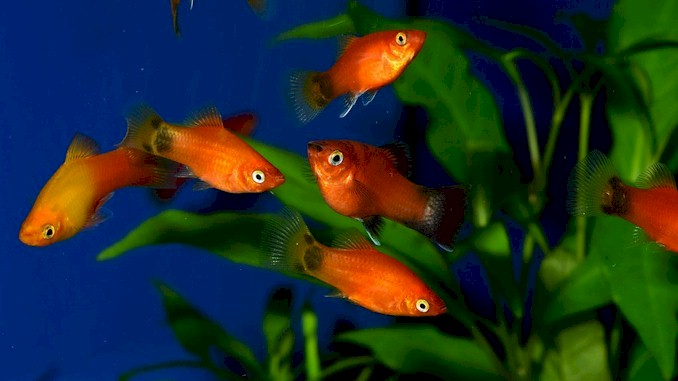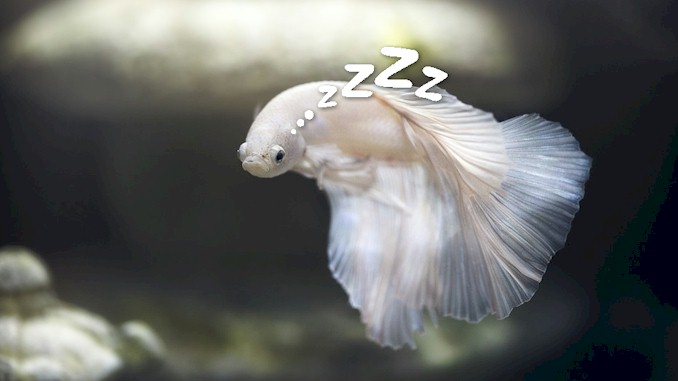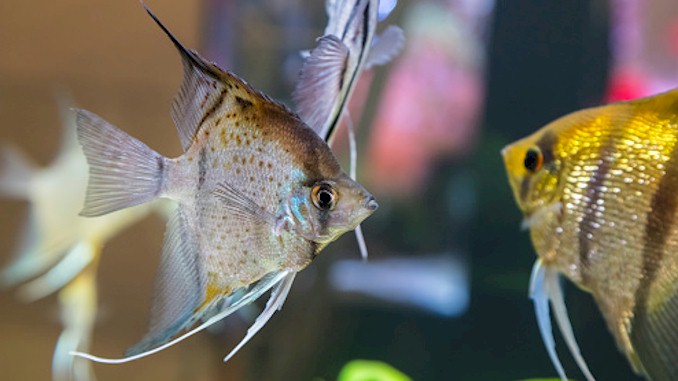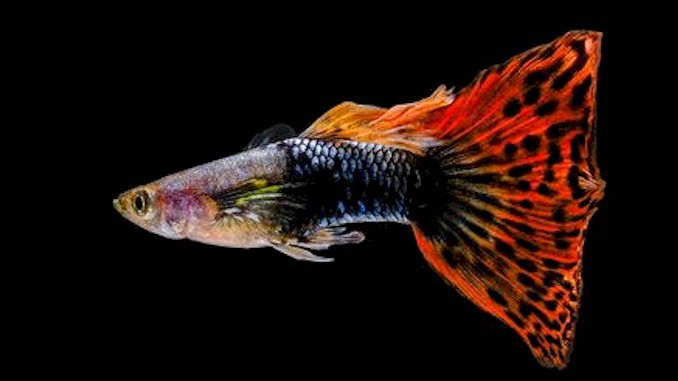Making It Work: Guppies and Platies in One Tank
If you’re a guppy and platy lover like me, you might have wondered whether it’s possible to house them together in the same tank. Fortunately, I’ve conducted extensive research and experimentation to find out the answer to this question. And if you’re seeking guidance on this matter, you’ve come to the right place! As a seasoned fish keeper, I’m confident that I can offer you a solution to successfully keep guppies and platies in the same tank. So if you’re eager to create a vibrant, diverse aquatic community, let me share my expertise with you. Together, we can make your guppy and platy tank dreams a reality!
Guppies and platies can indeed live together in the same tank, as they are both peaceful and adaptable species that have similar environmental requirements. However, it is important to ensure that the tank is large enough, adequately filtered, and decorated with plenty of hiding places to minimize any potential conflicts. By following these guidelines and maintaining good water quality, guppies and platies can thrive together in a beautifully balanced aquatic community.
If you’re interested in learning more about keeping guppies and platies together in the same tank, you’ve come to the right place. In the following sections of this post, I will dive deeper into the specific considerations you should make when setting up a community tank with these two species, including ideal tank size, water parameters, and compatible tank mates. I’ll also share some expert tips and tricks for managing any potential issues that may arise when housing guppies and platies together. So keep reading to discover how to create a thriving and beautiful aquarium with guppies and platies.
Tank Size and Setup: How to Create a Safe and Comfortable Habitat for Guppies and Platies
When it comes to setting up a tank for guppies and platies to live together, the first and most important consideration is the size of the aquarium. Both of these species are relatively small, but they are also active swimmers that require ample space to move around and explore. A good rule of thumb is to provide at least 10 gallons of water per fish, although a larger tank will always be more comfortable for your aquatic pets.
Additionally, it’s important to create a safe and comfortable habitat for your guppies and platies by providing plenty of hiding places and decor. These species are both peaceful, but they still need places to retreat when they feel threatened or stressed. You can add plants, rocks, and other structures to the tank to create a natural-looking environment that also provides shelter and hiding places.
Another key aspect of tank setup is filtration. Both guppies and platies are relatively hardy fish, but they do require clean water and good filtration to thrive. A high-quality filter system should be able to handle the bio-load of your tank and maintain stable water conditions. It’s also a good idea to perform regular water changes to keep your tank healthy and clean.
Finally, it’s important to consider the overall layout and arrangement of your tank. Guppies and platies both enjoy swimming at different levels in the water, so it’s a good idea to provide a mix of open swimming space and areas with plants or structures that break up the water flow. This will create a more interesting and engaging environment for your fish, and will also help to minimize any potential conflicts between different species in the tank.
In conclusion, setting up a tank for guppies and platies to live together requires careful consideration of tank size, decor, filtration, and layout. By providing a safe and comfortable habitat for your fish, you can create a thriving and beautiful aquatic community that brings joy and beauty to your home.
Water Quality and Parameters: Understanding the Ideal Conditions for These Two Species
Maintaining good water quality is essential to the health and well-being of guppies and platies. These species have similar environmental requirements, but there are some important nuances to keep in mind when it comes to water quality and parameters.
One of the most important factors to consider is temperature. Guppies and platies are both tropical fish and prefer water temperatures in the range of 72-82°F (22-28°C). Maintaining a stable temperature is crucial, as rapid fluctuations can stress your fish and lead to health problems.
Another key consideration is pH. Guppies and platies are both relatively adaptable and can tolerate a wide range of pH levels, but a neutral to slightly alkaline pH between 7.0 and 8.2 is generally recommended. It’s important to monitor pH levels regularly and make adjustments as needed to maintain a stable and healthy environment.
Water hardness is another important parameter to consider. Guppies and platies prefer moderately hard to hard water, with a general hardness (GH) of 8-12 dGH and a carbonate hardness (KH) of 6-10 dKH. You can test water hardness using a testing kit and make adjustments as needed using additives or by adjusting the type of substrate in your tank.
In addition to these parameters, it’s also important to consider water chemistry and overall water quality. Ammonia and nitrite levels should be kept at zero, while nitrate levels should be maintained at less than 20 ppm. You can achieve this by ensuring that your tank is adequately filtered, performing regular water changes, and avoiding overfeeding your fish.
Finally, it’s worth noting that guppies and platies are both susceptible to stress from poor water conditions, overcrowding, or other environmental factors. It’s important to monitor your tank regularly and address any issues promptly to ensure the long-term health and well-being of your fish.
In summary, maintaining the ideal water quality and parameters for guppies and platies requires attention to factors such as temperature, pH, water hardness, and overall water quality. By monitoring these parameters and making adjustments as needed, you can create a healthy and thriving environment for your aquatic pets.
Community Tank Mates: Which Fish Can Live Peacefully with Guppies and Platies?
One of the great joys of keeping guppies and platies is the ability to create a vibrant and diverse community tank. However, not all fish are compatible with these species, and it’s important to choose tank mates carefully to avoid aggression, predation, or other negative interactions.
One of the best options for tank mates are other peaceful, community-oriented fish that have similar environmental requirements to guppies and platies. Some great choices include neon tetras, swordtails, mollies, and corydoras catfish. These fish are all relatively easy to care for, and can add color and variety to your tank without posing a threat to your guppies or platies.
Another important consideration is size. It’s important to avoid keeping fish that are significantly larger or smaller than your guppies or platies, as this can lead to aggression or predation. Similarly, it’s best to avoid keeping fish with a similar body shape or coloration to your guppies or platies, as this can also lead to territorial behavior or fighting.
When selecting tank mates, it’s also important to consider the temperament of each species. Some fish, such as bettas or angelfish, can be aggressive and may not be suitable for a community tank. Other fish, such as certain species of tetras, may be prone to fin nipping, which can stress or harm your guppies or platies.
In addition to these factors, it’s important to consider the overall size of your tank and the number of fish you plan to keep. Overcrowding can lead to stress, aggression, and poor water quality, so it’s important to choose tank mates that will be comfortable in the size of your tank and that will not exceed your overall fish population limit.
In summary, choosing the right community tank mates for guppies and platies requires careful consideration of factors such as environmental requirements, size, temperament, and overall tank population. By selecting compatible and peaceful fish, you can create a thriving and diverse community tank that will bring joy and beauty to your home.
Feeding and Nutrition: Meeting the Dietary Needs of Both Species
Proper nutrition is essential for the health and well-being of both guppies and platies. These species are omnivores, meaning they require a varied diet that includes both plant and animal-based foods. Providing a balanced diet that meets the nutritional needs of both species is critical to ensuring their long-term health.
One of the best options for feeding guppies and platies is a high-quality flake food. These foods are formulated to provide a balanced diet that includes essential vitamins and nutrients, and can be easily found at most pet stores. However, it’s important to look for a food that is specifically formulated for both guppies and platies, as they may have different dietary requirements.
In addition to flake food, both species can benefit from occasional feedings of live or frozen foods such as brine shrimp, bloodworms, or daphnia. These foods can provide additional nutrients and variety to their diet, and can help to promote healthy growth and coloration.
When feeding your guppies and platies, it’s important to avoid overfeeding, as this can lead to health problems such as obesity and poor water quality. It’s best to feed small amounts of food several times a day, rather than one large feeding.
Another important consideration is water temperature. Guppies and platies are both tropical fish that require a water temperature between 75-82°F. In cooler temperatures, their metabolism slows down, which can lead to digestive issues and health problems. Therefore, it’s important to maintain a consistent water temperature to ensure proper digestion and nutrient absorption.
In summary, meeting the dietary needs of both guppies and platies requires providing a balanced diet that includes both plant and animal-based foods. Flake food is a good staple diet, but occasional feedings of live or frozen foods can provide additional nutrients and variety. It’s important to avoid overfeeding and maintain a consistent water temperature to ensure proper digestion and nutrient absorption. By providing proper nutrition, you can help to ensure the long-term health and well-being of your guppies and platies.
Troubleshooting: Managing Conflicts and Health Issues in a Guppy and Platy Community Tank
Even with the best intentions and care, conflicts and health issues can still arise in a guppy and platy community tank. It’s important to be vigilant and proactive in identifying and addressing these issues to ensure the health and safety of all your fish.
One common issue that may arise in a community tank is aggression between different fish species. While guppies and platies are generally peaceful fish, there may be instances where certain individuals become aggressive towards others. In these cases, it’s important to separate the aggressive fish or provide additional hiding places and decorations to reduce aggression.
Another potential issue is the development of diseases or infections. Common diseases in guppies and platies include fin rot, velvet, and ich. These can be caused by poor water quality, improper diet, or stress. To prevent these issues, it’s important to maintain a clean and well-filtered tank, provide a balanced diet, and monitor your fish for any signs of illness.
If you do notice signs of illness or infection, it’s important to take action quickly to prevent the spread of disease. Treatment options may include medications or adjusting the tank environment to improve water quality and reduce stress.
Finally, it’s important to monitor your guppies and platies for any changes in behavior or appearance. This can help to identify potential health issues early on, before they become more serious. Some signs to watch for include changes in appetite, swimming behavior, coloration, or the appearance of growths or lesions.
In conclusion, managing conflicts and health issues in a guppy and platy community tank requires vigilance, proactive monitoring, and swift action when necessary. By providing a well-maintained and balanced environment, you can help to prevent common issues such as aggression and disease. And by monitoring your fish closely and responding quickly to any changes or issues, you can help to ensure the long-term health and happiness of your guppies and platies.







